Liverpool is home to the largest cathedral in the United Kingdom, one of the oldest football stadiums in the world, and two museums dedicated to The Beatles.
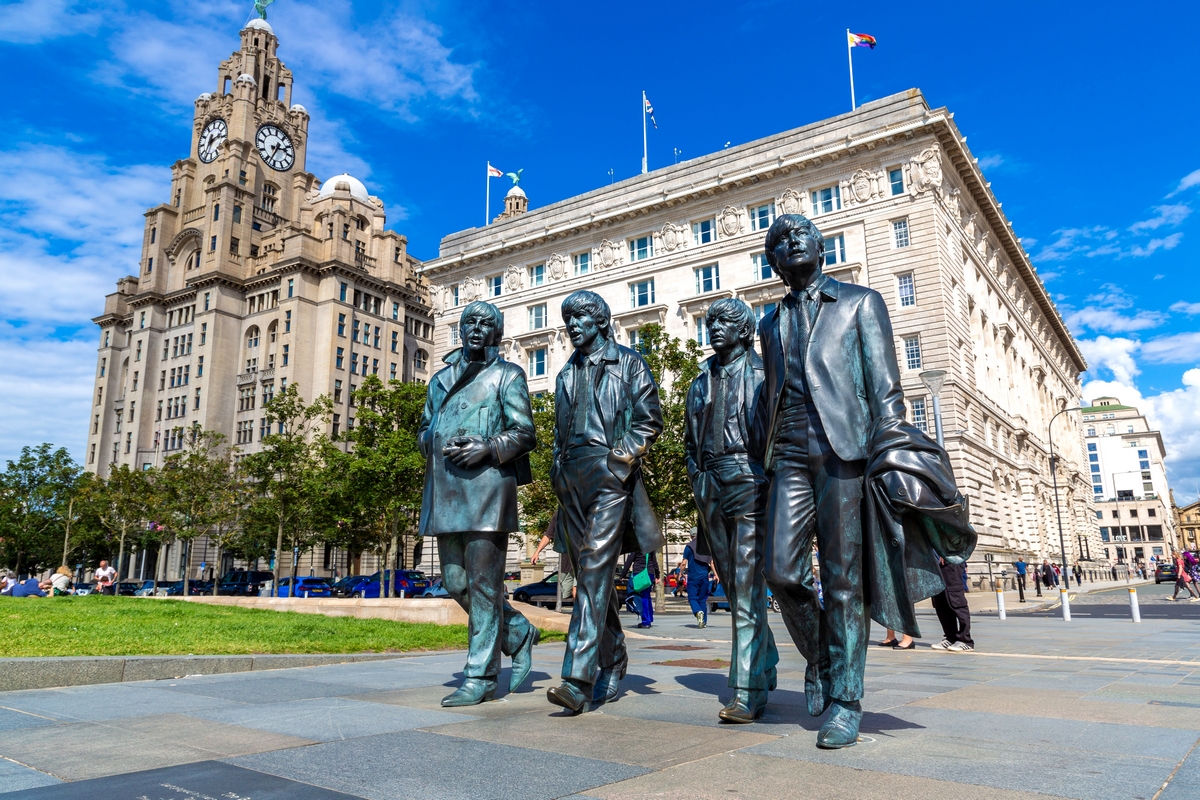
TRAVELOGUE
by Robert Čoban
Yet this time, it made headlines across the globe because of a previously unknown 53-year-old man.
Eleanor Rigby from the famous 1966 Beatles song about lonely people – collected rice in a church after a wedding, waited for days by the window, and lived inside her dreams. She also died in a church, and no one came to her funeral. Just as lonely was Father McKenzie, from the same song, as he wrote sermons that no one would hear.
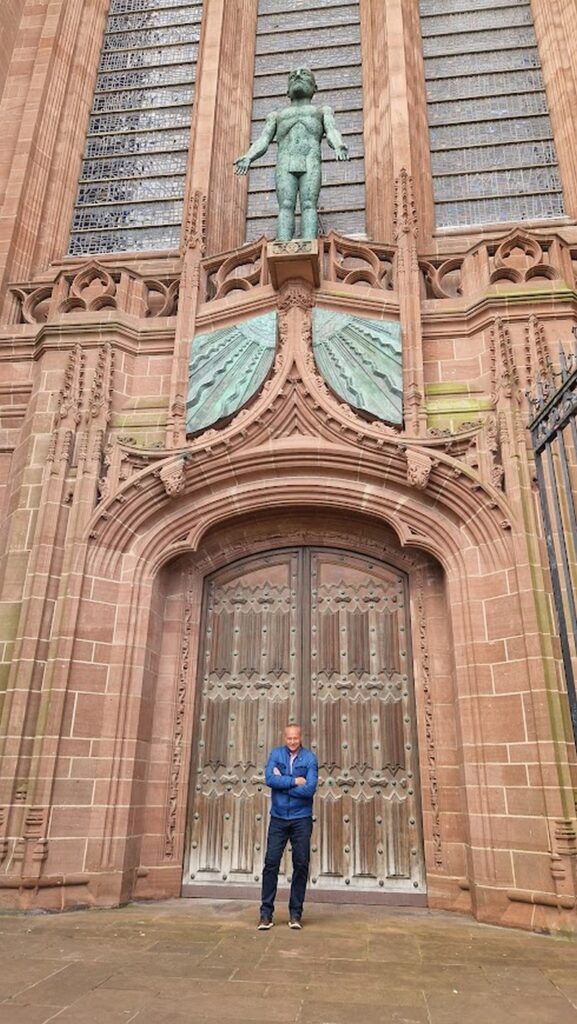
I thought of the two of them as I stood at the threshold of the Liverpool Cathedral – the largest church and the most prominent place of worship in the entire United Kingdom. Its massive tower, rising 101 metres high, can be seen from almost every corner of the city and reminded me of another tower in Liverpool – that of the George’s Dock Building, an Art Deco masterpiece from 1934.
When you approach the cathedral, it seems as though it was built in the Middle Ages – that’s how monumental it looks. However, specific details on the entrance portal reveal its origins – this is a 20th-century temple, constructed between 1904 and 1978. With a length of 189 metres (approximately 150 metres of interior space), Liverpool Cathedral is the longest church in the world and the fifth-largest overall.
In addition to this Anglican cathedral, Liverpool is also home to the Roman Catholic Metropolitan Cathedral of Christ the King. The two are less than a kilometre (half a mile) apart, joined by Hope Street.
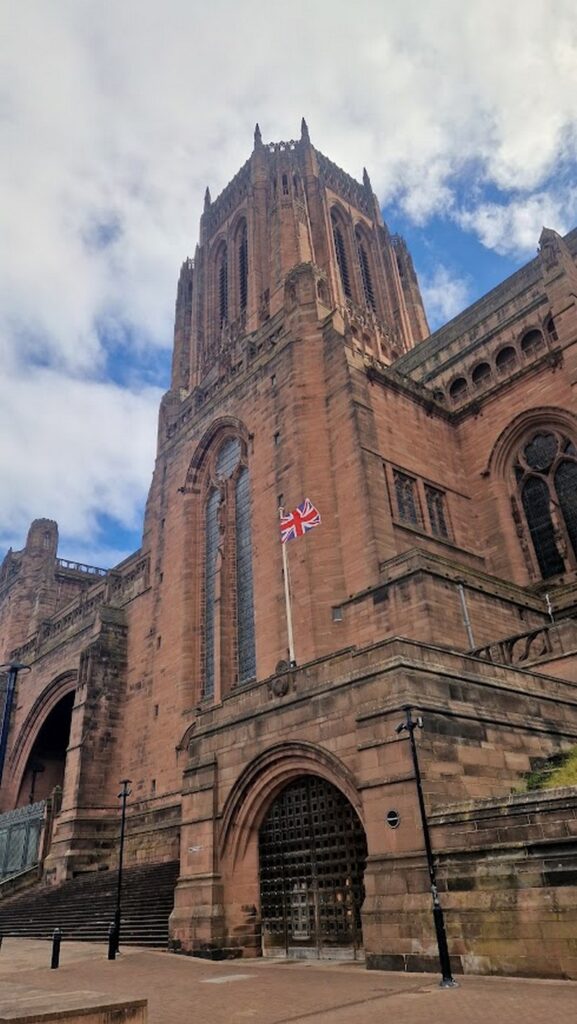
The list of records connected to this church doesn’t end there. The organ, built by Henry Willis & Sons, is the largest in the United Kingdom and, with an astonishing 10,268 pipes, one of the biggest musical instruments in the world. When we entered the church, it was Sunday, and only the front section was used for worship, while the rest of the space was open to visitors.
Let’s return for a moment to Eleanor Rigby and Father McKenzie. In the 1980s, a gravestone was discovered in the cemetery of St. Peter’s Church in Liverpool bearing the name of the Rigby family – among them, an Eleanor who died in 1939 at the age of 44. Nearby lies the grave of the McKenzie family.
Paul McCartney later claimed that, although he and John Lennon often walked past the gates of St Peter’s Church, the name in the song was not inspired by the gravestone there, and that his Eleanor Rigby was an entirely fictional character.
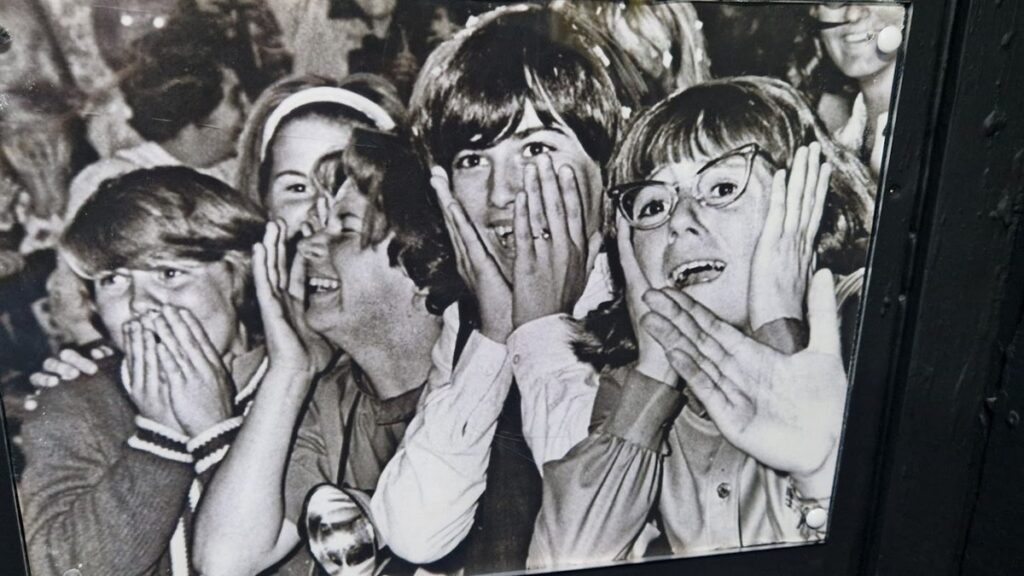
In fact, in the song’s early version, the heroine was called Daisy Hawkins, while the priest was darning his socks under the name Father McCartney. McCartney eventually settled on the final title by combining Eleanor, inspired by an actress from the film Help! – and Rigby, a name he had seen on a shopfront in Liverpool. The priest’s surname, McKenzie, he reportedly picked at random from a phone book.
Still, countless Beatles fans continue to visit the grave of Eleanor Rigby, who died in 1939, firmly believing she is the very same woman immortalised in the song.
On Liverpool’s Stanley Street stands a monument to the fictional Eleanor Rigby, bearing the inscription “All the Lonely People.”
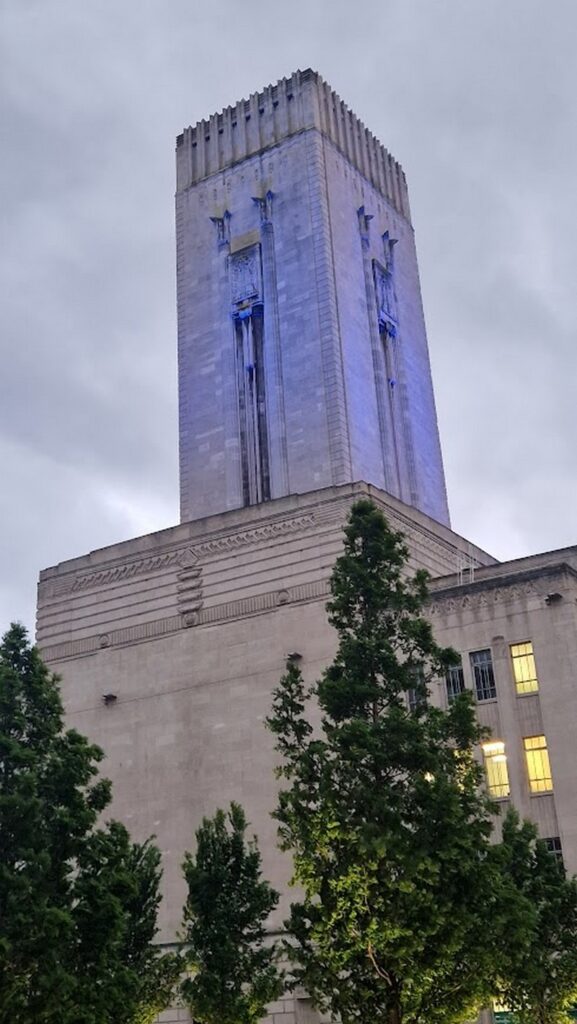
Of course, the reason for my visit to Liverpool wasn’t to explore the roots of what many consider the greatest band in the world, born from these very streets and pubs. I came to watch the football match between Liverpool and Crystal Palace, and to witness the crowning of this year’s Premier League champions.
However, once you set foot in this city, the Beatles are with you at every turn. A statue of the band’s four members stands at Pier Head, near the waterfront. Unveiled in 2015, it was created by sculptor Andy Edwards and donated to the city by The Cavern Club, where the Beatles performed in their early years. The club was closed in 1973, reopened in 1984, and then temporarily closed again between 1989 and 1991. It has been running nonstop ever since. In front of The Cavern Club stands a statue of John Lennon.
The company Norwegian Cruise Lines features Cavern Clubs on four of its cruise ships, where tribute bands perform Beatles music.
Liverpool is also home to two Beatles museums: The Beatles Story near the waterfront, close to the statue of the band members, and the Liverpool Beatles Museum in the city centre, not far from The Cavern Club. Admission to both is £20. They display memorabilia, photographs, chronological facts and recordings divided into different phases – and that’s about it. Somehow, I felt the Beatles deserved a larger, more modern and interactive museum.
We arrived at Anfield, the stadium of Liverpool F.C., two hours before the match against Crystal Palace, after which this year’s Premier League champion would be announced.
Anfield was built in 1884 and ranks as the 9th oldest football stadium in the world. Unsurprisingly, all nine oldest stadiums are in England.
Anfield was originally home to Everton (1884–1891), but after the club relocated to Goodison Park, it became—and has remained ever since—the home of Liverpool F.C. The stadium has undergone no fewer than 13 renovations, and today it can accommodate 61,000 spectators.
In the bustling crowd of fans arriving early to find their seats, one phrase caught my eye: “You’ll Never Walk Alone.” It is, of course, the club’s anthem – originally a song from the 1945 musical Carousel. Later, I heard it sung by tens of thousands of fans inside the stadium, and it honestly sounded powerful.
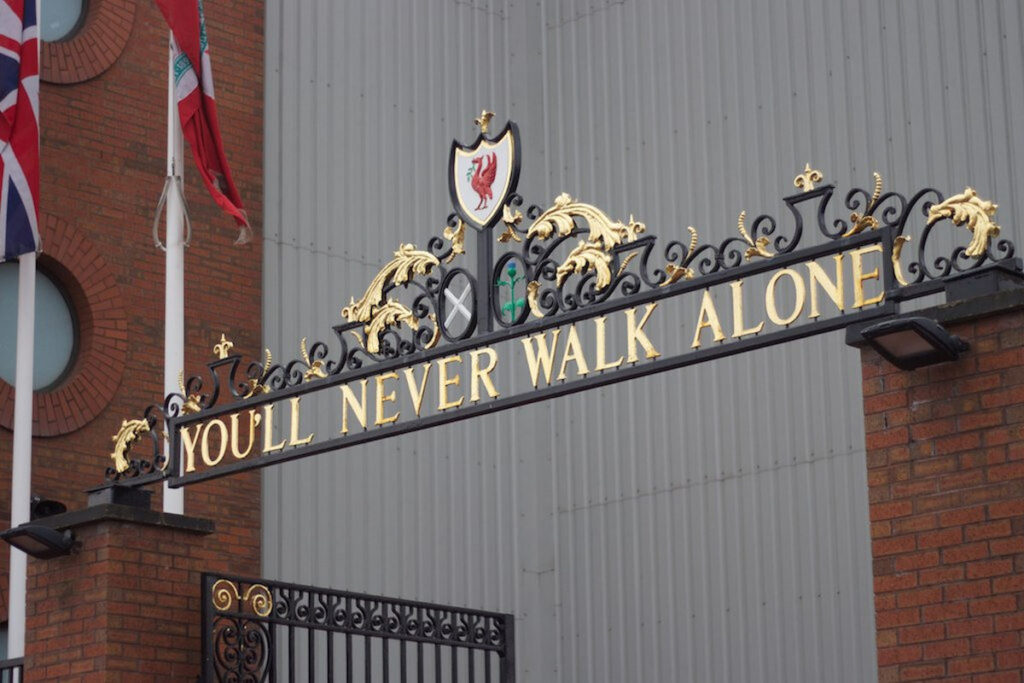
I also noticed the Memorial Plaque bearing the names of the 97 fans who lost their lives in the Hillsborough disaster. This tragic event took place on 15 April 1989 at Hillsborough Stadium in Sheffield, during the FA Cup semi-final between Liverpool and Nottingham Forest. A fatal human crush occurred on the terrace section occupied by Liverpool supporters. The final toll was 97 dead and 766 injured – a figure significantly higher than the Heysel Stadium disaster in Brussels in 1985, during the European Cup final between Liverpool and Juventus, where 39 fans were killed and over 600 injured.
The city of Liverpool is home to another memorial dedicated to Hillsborough – a circular monument with a relief depicting the events of that tragic day in Sheffield, inscribed with: “HILLSBOROUGH DISASTER. WE WILL REMEMBER THEM.”
Interestingly, although the Hillsborough tragedy claimed more lives, it is often less known internationally than Heysel, which is frequently cited as a turning point – the moment after which Margaret Thatcher “restored order among football fans.”
We waited for the start of the Liverpool–Crystal Palace match in the Carlsberg Lounge – fitting, as the famous Danish beer brand has been a long-time sponsor of Liverpool F.C.
Six years ago, I attended a match in the executive lounge of Manchester United and saw firsthand how football is a serious industry in serious countries like the United Kingdom.
At Anfield, too, former Liverpool stars walked around the lounge, posing for photos with fans and chatting with them, while waiters served cold beer and hot meat pies at halftime.
The match ended in a 1–1 draw, which was enough for the home team to secure its place at the top of the Premier League table and claim the title of champions.
We decided to walk from the stadium back to the hotel – about an hour’s walk – moving through a sea of cheerful, celebrating supporters.
That might have been the end of this report, had it not been for the news that arrived a day later, while I was already on a flight from London to Yerevan for a conference. A driver had ploughed into a crowd of celebrating fans on the streets of Liverpool, causing a serious incident.
The incident occurred the day after the match, on Monday afternoon, when 53-year-old Paul Doyle drove his car into a crowd of people. Seventy-nine individuals were injured, including four seriously, among them a child. The wounded ranged in age from nine to 78. Doyle appeared in court in Liverpool today but did not enter a plea, according to British media reports. He has been charged with dangerous driving and six additional offences, including intentional infliction of grievous bodily harm. The charges relate to injuries sustained by two boys, two women, and two men.
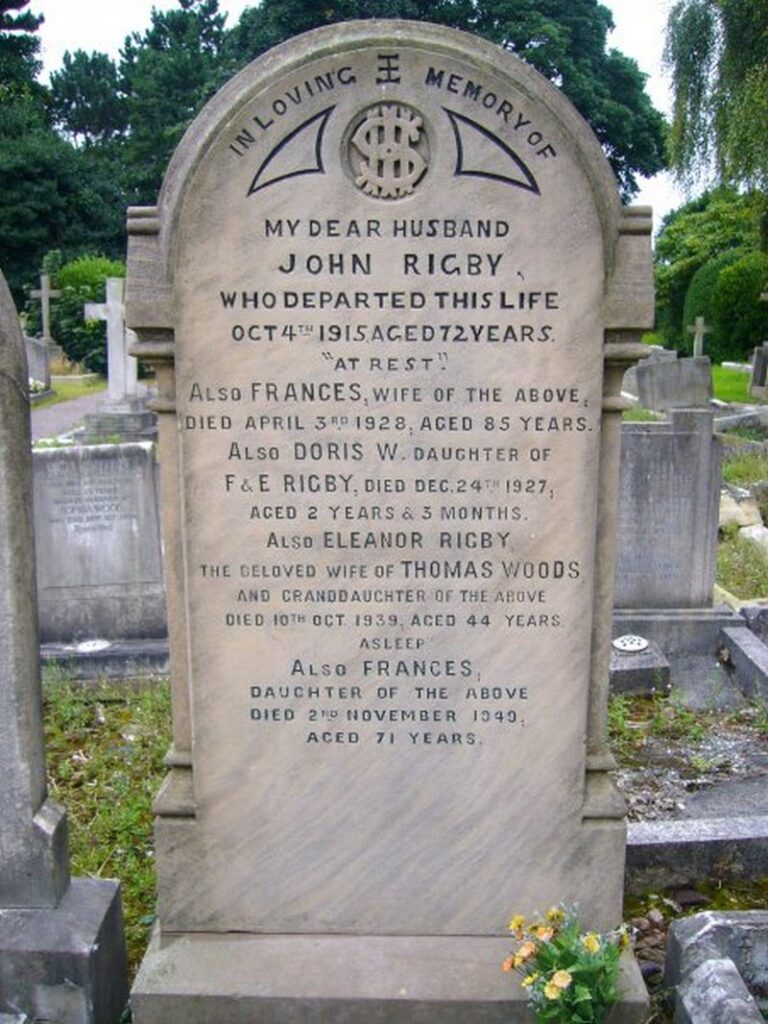
More than 50 people received medical assistance on Monday, with seven requiring further treatment and remaining in the hospital. If found guilty, Doyle could face a maximum sentence of life imprisonment.
Police have stated that the incident is not being treated as terrorism, but the motive remains unclear.
“He’s not young, he’s white! British, born on the island. Admit it – that’s not what you were expecting?” read one comment on social media, alluding to the fact that many had likely assumed the driver would be a young man, a migrant, probably of Muslim faith.
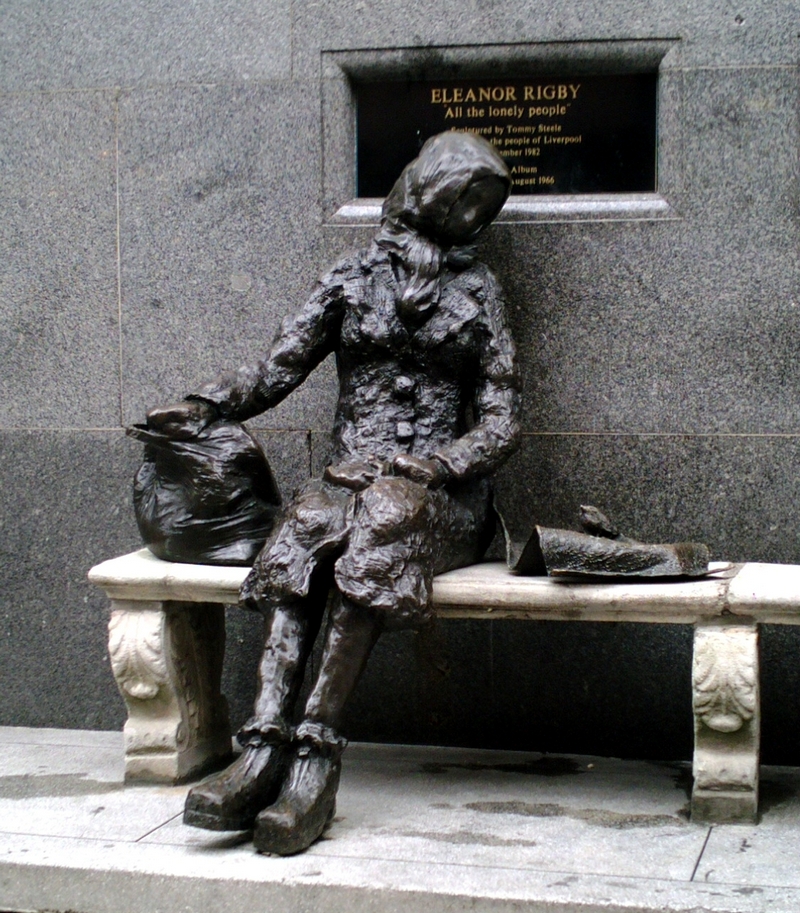
Had Eleanor Rigby still been watching from her window, what would she have seen today? A man, white and from her own national and social group, ploughed his car into innocent people.
What kind of world do the “grandchildren of the Beatles” live in? And are we, perhaps, even more depressed and alone today than Eleanor Rigby and Father McKenzie were, back at the beginning of this story?
Photos: Robert Čoban